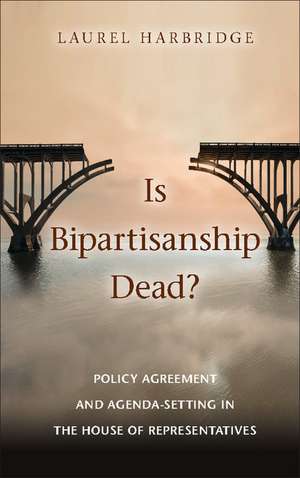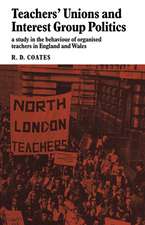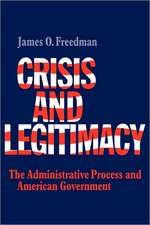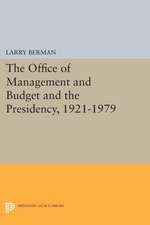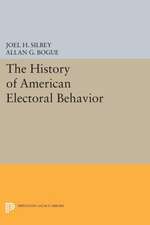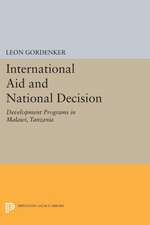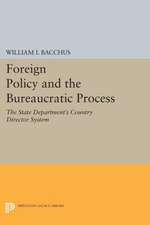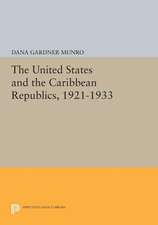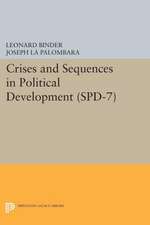Is Bipartisanship Dead?: Policy Agreement and Agenda-Setting in the House of Representatives
Autor Laurel Harbridgeen Limba Engleză Paperback – 22 mar 2015
| Toate formatele și edițiile | Preț | Express |
|---|---|---|
| Paperback (1) | 260.91 lei 3-5 săpt. | |
| Cambridge University Press – 22 mar 2015 | 260.91 lei 3-5 săpt. | |
| Hardback (1) | 626.38 lei 6-8 săpt. | |
| Cambridge University Press – 15 mar 2015 | 626.38 lei 6-8 săpt. |
Preț: 260.91 lei
Nou
Puncte Express: 391
Preț estimativ în valută:
49.93€ • 51.58$ • 41.56£
49.93€ • 51.58$ • 41.56£
Carte disponibilă
Livrare economică 05-19 martie
Preluare comenzi: 021 569.72.76
Specificații
ISBN-13: 9781107439283
ISBN-10: 1107439280
Pagini: 268
Ilustrații: 67 b/w illus. 25 tables
Dimensiuni: 153 x 230 x 15 mm
Greutate: 0.39 kg
Editura: Cambridge University Press
Colecția Cambridge University Press
Locul publicării:New York, United States
ISBN-10: 1107439280
Pagini: 268
Ilustrații: 67 b/w illus. 25 tables
Dimensiuni: 153 x 230 x 15 mm
Greutate: 0.39 kg
Editura: Cambridge University Press
Colecția Cambridge University Press
Locul publicării:New York, United States
Cuprins
1. Introduction; 2. A puzzle of declining bipartisanship; 3. Strategic partisan agenda setting: a theoretical framework; 4. Agenda setting and the decline of bipartisan cooperation; 5. Variation in strategic partisan agenda setting; 6. Strategic partisan agenda setting across policy areas; 7. District responsiveness and member-party relationships; 8. The past, present, and future of bipartisanship.
Recenzii
'This provocative book looks beyond roll-call votes to understand the rise in partisan conflict in the House of Representatives. Documenting the robust persistence of bipartisanship in pre-floor settings, Harbridge contends that the high levels of party conflict on the contemporary House floor partly reflect the strategic choices of party leaders. Legislative scholars will want to engage with Harbridge's careful and probing analysis.' Frances Lee, University of Maryland
'Politicians and political observers regularly decry the lack of bipartisanship in Congress, claiming that the bipartisan cooperation regularly found in Congresses past has now all but disappeared. Yet despite these claims, scholars have conducted surprisingly little systematic analysis of bipartisanship - until now. In this insightful, nuanced, and thoroughly convincing analysis, Harbridge shows that although bipartisanship on roll-call voting has declined in recent decades, due mainly to strategic choices by party leaders, bipartisanship at other stages of the legislative process continues to persist.' Charles Shipan, J. Ira and Nicki Harris Professor of Social Science, University of Michigan
'Observers of the legislative process intuit that the rise in congressional partisanship is due to a changing agenda, yet few studies have managed to unpack the black box that is the agenda-setting process. Harbridge documents more directly than other researchers that leaders bring bills to the floor in a selective fashion that leads to more partisan vote outcomes. This book should push scholars to look past the stifling polarization that defines contemporary roll-call voting and understand its origins.' Barry Burden, University of Wisconsin, Madison
'At a time when scholars, pundits, and other commentators are constantly pointing to partisan conflict in Washington, DC, and lamenting its consequences for the health of the American political system, Harbridge offers a fresh and important perspective on the relationships between legislators, party leaders, and their consequences for the appearance, though perhaps not actual incidence, of polarization in Congress. Harbridge offers a compelling argument that suggests that bipartisanship is alive and well in Washington, DC, even though the choices of legislative leaders might lead us to believe that the opposite is true. This book represents a major contribution to the field of legislative studies, and it will go a long way toward helping scholars to understand how party leaders and organizations interact with their members to influence the legislative agenda. Harbridge's findings should change the way that many scholars think about polarization in Congress; and they will help everyday citizens better understand what they observe in contemporary American politics.' Alan Wiseman, Vanderbilt University, Tennessee
'This interesting and important book makes a major contribution to the literature on congressional parties and polarization. Harbridge's argument that observed partisan conflict is in large measure the consequence of strategic choices by parties in constructing the agenda is supported by solid and novel evidence. She also shows that a measure of bipartisanship persists. I expect that this book will be widely assigned in Congress courses, and certainly in mine.' David Rohde, Ernestine Friedl Professor of Political Science, Duke University, North Carolina
'One truism of American politics is that Congress is hopelessly polarized and mired in gridlock. Laurel Harbridge provides a deeper understanding of why that has happened, while providing evidence that there is more bipartisanship than meets the eye. Polarization is largely created by 'strategic partisan agenda-setting' in which party leaders advance partisan bills over bipartisan alternatives. Harbridge shows that bipartisan legislation continues to be a central part of governance through legislation approved by voice votes and cross-party cosponsorship of legislation. This is essential reading for anyone who wants to understand the partisan divide in Congress.' David Canon, University of Wisconsin, Madison
'In Is Bipartisanship Dead? Professor Harbridge makes a wonderful contribution to the growing literature on party polarization in the U.S. Congress, pointing to persistent bipartisanship in the pre-agenda stages of the legislative process that have gone largely unnoticed to date. In addition, she offers valuable insights into understanding how members balance the increasing partisan demands of the modern Congress with electoral considerations. She also justifiably challenges congressional scholars to think more critically about our measures of polarization. This book is both theoretically rich and empirically sophisticated, making it a joy to read. I anticipate that it will receive considerable praise in years to come.' Ryan J. Vander Wielen, Congress and the Presidency
'Politicians and political observers regularly decry the lack of bipartisanship in Congress, claiming that the bipartisan cooperation regularly found in Congresses past has now all but disappeared. Yet despite these claims, scholars have conducted surprisingly little systematic analysis of bipartisanship - until now. In this insightful, nuanced, and thoroughly convincing analysis, Harbridge shows that although bipartisanship on roll-call voting has declined in recent decades, due mainly to strategic choices by party leaders, bipartisanship at other stages of the legislative process continues to persist.' Charles Shipan, J. Ira and Nicki Harris Professor of Social Science, University of Michigan
'Observers of the legislative process intuit that the rise in congressional partisanship is due to a changing agenda, yet few studies have managed to unpack the black box that is the agenda-setting process. Harbridge documents more directly than other researchers that leaders bring bills to the floor in a selective fashion that leads to more partisan vote outcomes. This book should push scholars to look past the stifling polarization that defines contemporary roll-call voting and understand its origins.' Barry Burden, University of Wisconsin, Madison
'At a time when scholars, pundits, and other commentators are constantly pointing to partisan conflict in Washington, DC, and lamenting its consequences for the health of the American political system, Harbridge offers a fresh and important perspective on the relationships between legislators, party leaders, and their consequences for the appearance, though perhaps not actual incidence, of polarization in Congress. Harbridge offers a compelling argument that suggests that bipartisanship is alive and well in Washington, DC, even though the choices of legislative leaders might lead us to believe that the opposite is true. This book represents a major contribution to the field of legislative studies, and it will go a long way toward helping scholars to understand how party leaders and organizations interact with their members to influence the legislative agenda. Harbridge's findings should change the way that many scholars think about polarization in Congress; and they will help everyday citizens better understand what they observe in contemporary American politics.' Alan Wiseman, Vanderbilt University, Tennessee
'This interesting and important book makes a major contribution to the literature on congressional parties and polarization. Harbridge's argument that observed partisan conflict is in large measure the consequence of strategic choices by parties in constructing the agenda is supported by solid and novel evidence. She also shows that a measure of bipartisanship persists. I expect that this book will be widely assigned in Congress courses, and certainly in mine.' David Rohde, Ernestine Friedl Professor of Political Science, Duke University, North Carolina
'One truism of American politics is that Congress is hopelessly polarized and mired in gridlock. Laurel Harbridge provides a deeper understanding of why that has happened, while providing evidence that there is more bipartisanship than meets the eye. Polarization is largely created by 'strategic partisan agenda-setting' in which party leaders advance partisan bills over bipartisan alternatives. Harbridge shows that bipartisan legislation continues to be a central part of governance through legislation approved by voice votes and cross-party cosponsorship of legislation. This is essential reading for anyone who wants to understand the partisan divide in Congress.' David Canon, University of Wisconsin, Madison
'In Is Bipartisanship Dead? Professor Harbridge makes a wonderful contribution to the growing literature on party polarization in the U.S. Congress, pointing to persistent bipartisanship in the pre-agenda stages of the legislative process that have gone largely unnoticed to date. In addition, she offers valuable insights into understanding how members balance the increasing partisan demands of the modern Congress with electoral considerations. She also justifiably challenges congressional scholars to think more critically about our measures of polarization. This book is both theoretically rich and empirically sophisticated, making it a joy to read. I anticipate that it will receive considerable praise in years to come.' Ryan J. Vander Wielen, Congress and the Presidency
Notă biografică
Descriere
Is Bipartisanship Dead? strives to shed light on whether partisan conflict is insurmountable, and to answer questions surrounding representation and governance.
